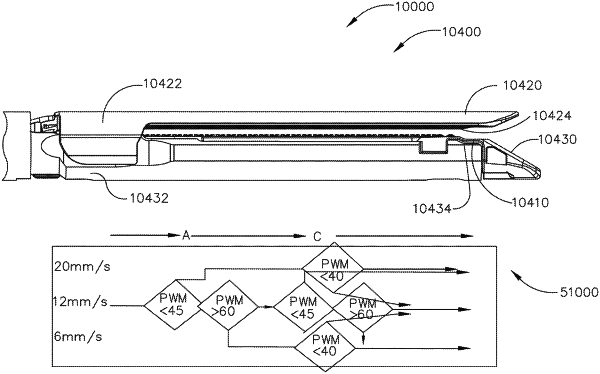| CPC A61B 17/07207 (2013.01) [A61B 18/1445 (2013.01); A61B 2017/0019 (2013.01); A61B 2017/00039 (2013.01); A61B 2017/00398 (2013.01); A61B 2017/00734 (2013.01); A61B 2017/07228 (2013.01); A61B 2017/07257 (2013.01); A61B 2017/07271 (2013.01); A61B 2017/07285 (2013.01); A61B 2018/0063 (2013.01)] | 21 Claims |

|
1. A method of stapling the tissue of a patient with a stapling instrument, comprising:
clamping the patient tissue with an end effector of the stapling instrument;
deploying staples from a staple cartridge in the end effector with a firing member during a firing stroke;
driving the firing member with an electric motor during the firing stroke;
adjusting, with a pulse width modulation speed controller, a duty cycle of voltage pulses to achieve a target-speed of the electric motor;
comparing the duty cycle to one or more first predetermined thresholds during the firing stroke at a first adjustment point, wherein the first adjustment point is a predetermined distance distally from a proximal unfired starting position of the firing member;
comparing the duty cycle to one or more second predetermined thresholds during the firing stroke at a second adjustment point, wherein the second adjustment point is a predetermined distance distally from the first adjustment point; and
changing the target speed based on the comparison of the duty to the one or more first predetermined thresholds at the first adjustment point and/or based on comparison of the duty cycle to the one or more second predetermined thresholds at the second adjustment point.
|